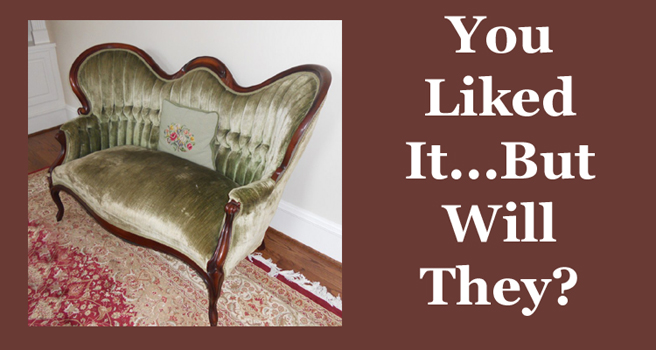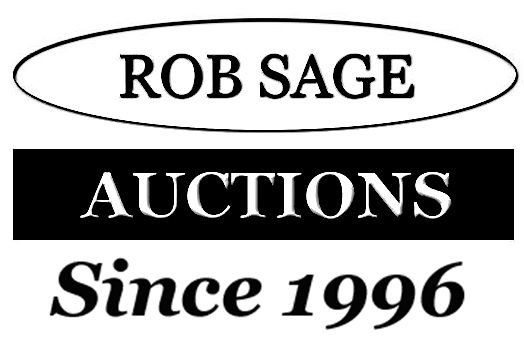A Magazine Article That Says What I Have Been Saying!
December 11, 2015

Consignors are constantly asking me about the state of the antique market…and I have my own thoughts and feelings.
However, this article nicely sums up what I have been saying for the last few years….well worth the read!
“Enjoy every bite off that heirloom china on Thanksgiving Day.
But don’t bet your retirement on the cherished dinnerware; it’s probably not worth what you think.
Evolving tastes, changing demographics and technology have conspired to reduce the value of china, crystal, furniture and other once-pricey heirlooms that have been handed down from generation to generation.
“I have these conversations every day,” said Amelia Jeffers, president of Garth’s Auctioneers & Appraisers in Delaware. “The price on many of these things has gone down despite the fact that they’re old and not made anymore.”
Antiques expert and newspaper columnist Terry Kovel tells two things to people pondering their parents’ furnishings.
“Your mother said, ‘You have to have this; it’s very valuable.’ Don’t believe it. It probably isn’t. Secondly, she tells you, ‘I want you to have my collection.’ No, you don’t want it. Tell your mother she’s better off to get rid of it.”
Sellers are battling simple math. Baby boomers, born between 1946 and 1964, are selling their family homes by the thousands, dumping attics and closets full of heirlooms onto the market.
More than 55 million Americans are 60 or older, compared with 45 million who are 25 to 35, the prime age of setting up households.
“We’re downsizing the largest generation in history,” said Jacquie Denny, who co-founded Everything But the House, a Cincinnati-based company that liquidates estates.
“The need is just not there.”
The glut of merchandise wouldn’t be a problem if younger people actually liked the items. But most will take a sleek Crate & Barrel credenza over an Eastlake Victorian cabinet or Duncan Phyfe table any day.
“Most kids come in saying, ‘Mom and Dad, I love you, but I don’t love your furniture,’ ” Denny said.
While our grandparents may have scrimped and saved for a dining room set they expected to last a lifetime, younger people today are more likely to take a disposable approach to household furnishings.
“In the old days, lines like Henredon and Baker were quality,” said Chris Davis, owner of Auction Ohio, which sells estates through online auctions. “Now, Ikea is the No. 1 furniture manufacturer because people know they will change it in three years.”
Lifestyle has also limited the appeal of heirlooms.
“When my mom entertained, it was an event. We used nice china and crystal,” Denny said. “I don’t know anyone who pours soup into a tureen and sets it on the table anymore. Now women are running around with work or kids in sports. They’re too busy for that.”
But, as Jeffers notes, this isn’t just a generational shift.
“Young people just don’t use china anymore — and you know what? Old people don’t, either. This isn’t just a generation thing. It’s a lifestyle change for everyone. . . . So demand isn’t there for these objects.”
Finally, technology is punishing sellers. While collectors might once have looked high and low for that final piece of Christmas Spode — and have been willing to pay top dollar for it — now they can find hundreds of the pieces online.
“Twenty years ago, if you wanted to buy a certain Hummel figurine, you would have to search and scour,” Jeffers said. “Now, if you go to eBay or Craigslist and type in Royal Doulton or Hummel, you get thousands of hits.”
Hummel, in fact, turns up 29,142 listings on eBay while Royal Doulton returns 68,683 hits.
“The effective supply has increased dramatically and, at the same time, demand has decreased,” Jeffers said.
While demand remains strong for some hand-me-downs — including firearms, vintage clothing and jewelry — the resale market has been especially hard on three heirloom mainstays: china, crystal and furniture.
Large wooden pieces — especially bedroom and dining-room sets — have taken a particular beating.
“Every senior who downsizes gets rid of two bedroom sets and a formal dining room set,” Denny said. “If you paid $15,000 for a nice Henredon dining room set years ago, you’ll only capture $2,500 for that set today.”
Davis, with Auction Ohio, sees similar examples all the time.
“When I was started in this business in 1985, a Victorian parlor set was worth about $2,000. Today, you’d be lucky to get $200,” he said. “A nice Ohio-made walnut empire chest was $1,000. Now it’s $150, and you can buy a truckload of them.”
Mainstream china sets have also suffered, not only because of tastes and lifestyle but also because of technology.
“China is a problem all over,” said Suzy Smith, owner of the Columbus downsizing firm Suzy’s Helping Hands, which helps people downsize. “It doesn’t sell like it used to. It’s not dishwasher-safe and younger people want Pottery Barn. They’re not big on Oriental patterns.”
Crystal has also taken a hit. Davis estimates that the value of Heisey crystal, for example, has fallen 50 percent in the past 10 or 15 years.
Clear stemware with gold rims is another common example, Denny said. An entire set of 12 may fetch $25 today, the same price that a single piece might have fetched 15 years ago, she said.
Experts note, however, that exceptions abound.
The lucky baby boomer unloading a house full of high-end midcentury furniture such as Eames or Wegner chairs will find a big audience willing to pay.
And while silver-plated flatware doesn’t command much of a price, sterling silver has held up, largely because, like jewelry, it is tied to the commodities market.
For the most part, though, experts say it’s the oddball item instead of the mass-produced china, crystal or furniture that can be a home run.
Jeffers can cite a string of examples, from the 11-inch bronze Buddha from a Worthington widow that fetched $43,475 to a 19th-century painted blanket chest that someone brought in during Garth’s open-house appraisal day that ended up selling for $41,125.
As Jeffers puts it, “It’s the stuff people don’t know they have that’s valuable.”




No Responses